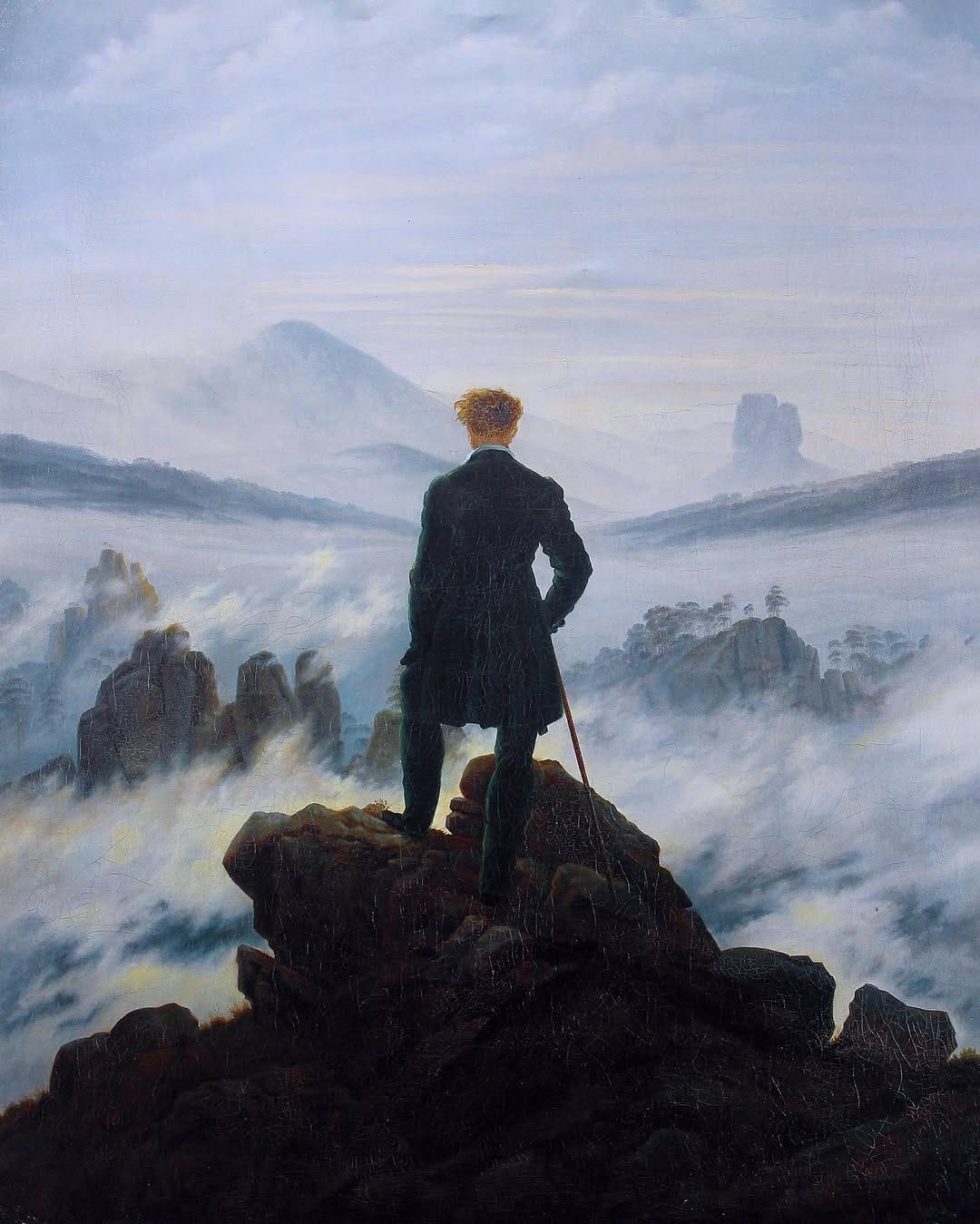CASPAR DAVID FRIEDRICH - WANDERER ABOVE THE SEA OF FOG, 1818
Friedrich excelled at transforming a landscape painting into an opportunity for self-examination. The solitary figure is commonly perceived as a self-representation by Friedrich within a landscape setting, illustrating his own connection to and deep reflection on nature. Friedrich himself stated that self-expression must be achieved through both physical and spiritual seclusion, a recurring motif in his body of work.
In Friedrich's allegorical landscapes, such as "The Wanderer above the Sea of Fog," a solitary figure stands out against a grand and intense backdrop, a technique known as Rückenfigur. The artist invites the viewer to see the landscape from his point of view by depicting the figure from behind. Spirituality was going through a sort of renewal in popular culture at this time. Aided by the dissatisfaction with materialism, many artists, including Friedrich, were influenced by this. Nature was reevaluated, and humanity’s place in the world was reduced to scale.
Friedrich originally sketched the outline of this piece at the Elbe Sandstone Mountains in Saxony in Southeastern Germany. He completed the last artwork in his studio. This painting was surprisingly undervalued while the artist was alive and only gained significant appreciation posthumously.



